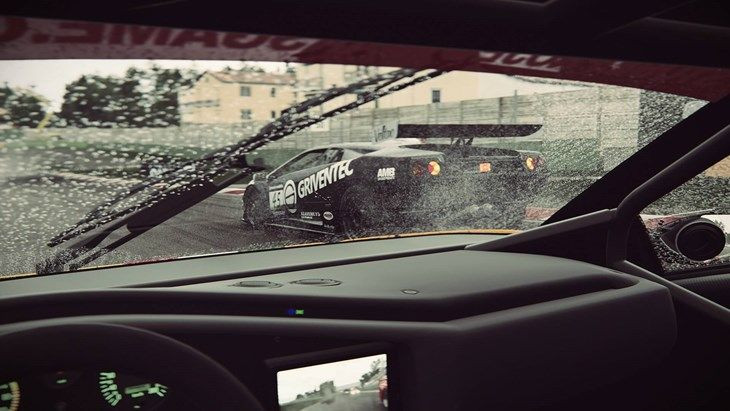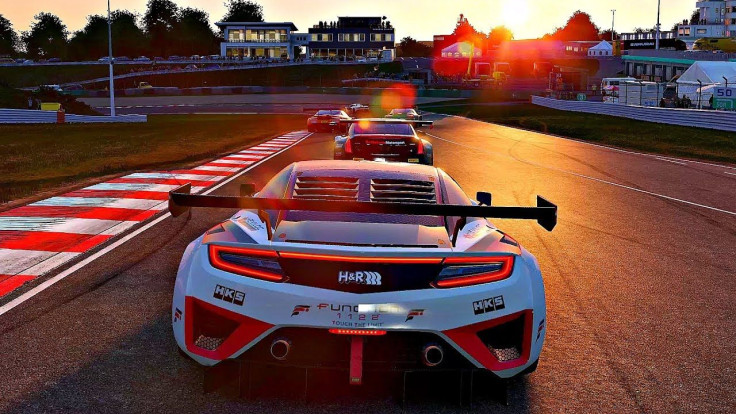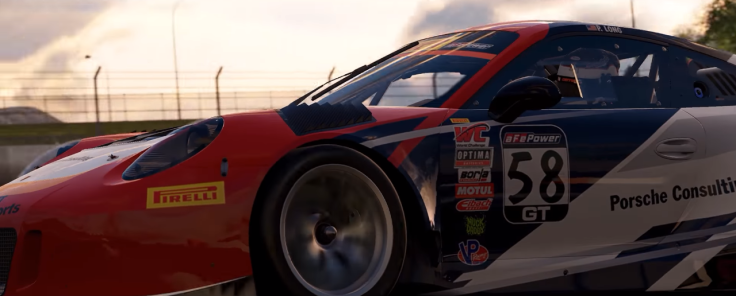It's unbelievable how realistic Project Cars 2 looks, sounds and feels. Of course, the sequel to Slightly Mad Studio’s successful 2015 title offers a gorgeous 4K experience, as does all the new generation of racing games, including F1 2017, Forza Motorsport 7 and Gran Turismo Sport. But there’s more that sets Project Cars 2 apart -- it’s as much about brains as it is about beauty.
GRAPHICS

Our Project Cars 2 review copy is for the standard PlayStation 4. I didn’t get to experience the game in 4K HD, but that’s not necessary to appreciate the game’s innate intensity. Project Cars 2 can be beautiful at times -- pretty pink clouds and blooming sun rays reflect off the soft black and white livery of the Acura NSX GT3. But it can also be terrifying -- thunderstorms rapidly pools the track with water more quickly than the drains can remove it. Not only does the storm make it difficult to see, but every turn feels like a roll of the dice. Don’t let the flash of lightning distract you either.
Beauty may be subjective, but blizzards aren’t. As far as weather and time change dynamics are concerned, Project Cars 2 delivers the widest range of natural elements of any racing game I’ve ever played. The effects are not only visually impressive, but also dramatically changes the track and the way the car behaves. The level of detail boggles the mind.
DRIVING EXPERIENCE
This is where players may have divided opinions. Right out the box, Project Cars 2 is not an easy game to play. I used the Logitech G29 wheel and my Porsche Cayman GT4 Clubsport MR felt twitchy -- it only takes a little bit to unsettle the car, be it an abrupt weight shift, missing a braking point, or surface changes. Even with ABS, it doesn’t take much for the brakes to lock up and get skittish. Spins are abrupt and difficult to catch once you’re on the wrong side of the knife edge.
Instead of tweaking a couple lines of code to make Project Cars 2 more accessible for a larger audience, Slightly Mad Studios makes it clear the game is not meant to be played straight out the box. Experienced driving enthusiasts will know the real gem of Project Cars 2 is its tuning editor, which breaks down every adjustable aspect of the car.
Tire compound and pressure can be dialed in asymmetrically. Likewise, brake bias, balance and ducting can be tuned front and rear. Suspension spring-rate, damper, anti-roll bar can all be customized. Ride height, toe, and camber alignment can all be uniquely adjusted at every corner. The setup and tuning rabbit hole dives further into ECU, engine, gearing and differential, each with its own sub-category of components available for adjustment.
You get the idea -- the tuning editor is neurotic, but if you can get it right, then you can find confidence in any car.
GAMEPLAY

From the tricky driving dynamics to the overwhelming customization options in the tuning editor, Project Cars 2 operates at a steep learning curve. Thankfully, the game also features elements that help casual gamers get up to speed.
First, to make the tuning editor feel more accessible to the average player, Project Cars 2 introduced a really innovative Race Engineer tool, which intuitively guides players to specific solutions that could solve certain issues. Players can pose several challenges to the Race Engineer like, “I’m not stopping in time,” “I keep spinning out in fast corners,” “The car doesn’t turn into corners,” “I am slow accelerating” and more. In turn, the tool will recommend adjustments to improve how the car behaves. The Race Engineer is superb and the practical lessons even carry over to other racing games.
Thankfully, there are also driving aids for the novice, which range from steering and braking assistance, different levels of ABS, stability, and traction control. HUD options offer telemetry, driving line, turn indicator, lap info, map layout, proximity indicators and team radio.
However, Slightly Mad Studios seems to have dedicated more time to refining the sophisticated tuning elements than the driving aids. I often prefer to use driving lines to acclimate to new games. If I’m still getting familiar with the physics or if I don’t remember a racetrack, an accurate driving line improves my driving more than any other tool and helps to minimize the need to restart a race. However, the driving line in Project Cars 2 is way off. One example: the braking point at the crest before the Laguna Seca corkscrew comes way too early. Meanwhile, the braking point indicator at the end of the Monza straight turns on way too late. Even some of the A.I. racers missed their braking points and flew off the track. And at times, the driving line is completely missing. Project Cars 2’s driving line is clearly broken.
VERDICT
When it comes to sequels, some developers take a more conservative route and create a game with more mass appeal. Instead, Slightly Mad Studios opted to reinforce what made Project Cars unique. Weather dynamics and driving physics are more complex than ever and the game’s tuning editor is among the best in console racing sims. The high level of sophistication may cause casual players to feel intimidated by the game’s depth, but the novel Race Engineer is a terrific coach and can be beneficial to experienced and novice sim gamers alike.
- -Amazing weather dynamics
- -In-depth tuning editor
- -Steep learning curve



















